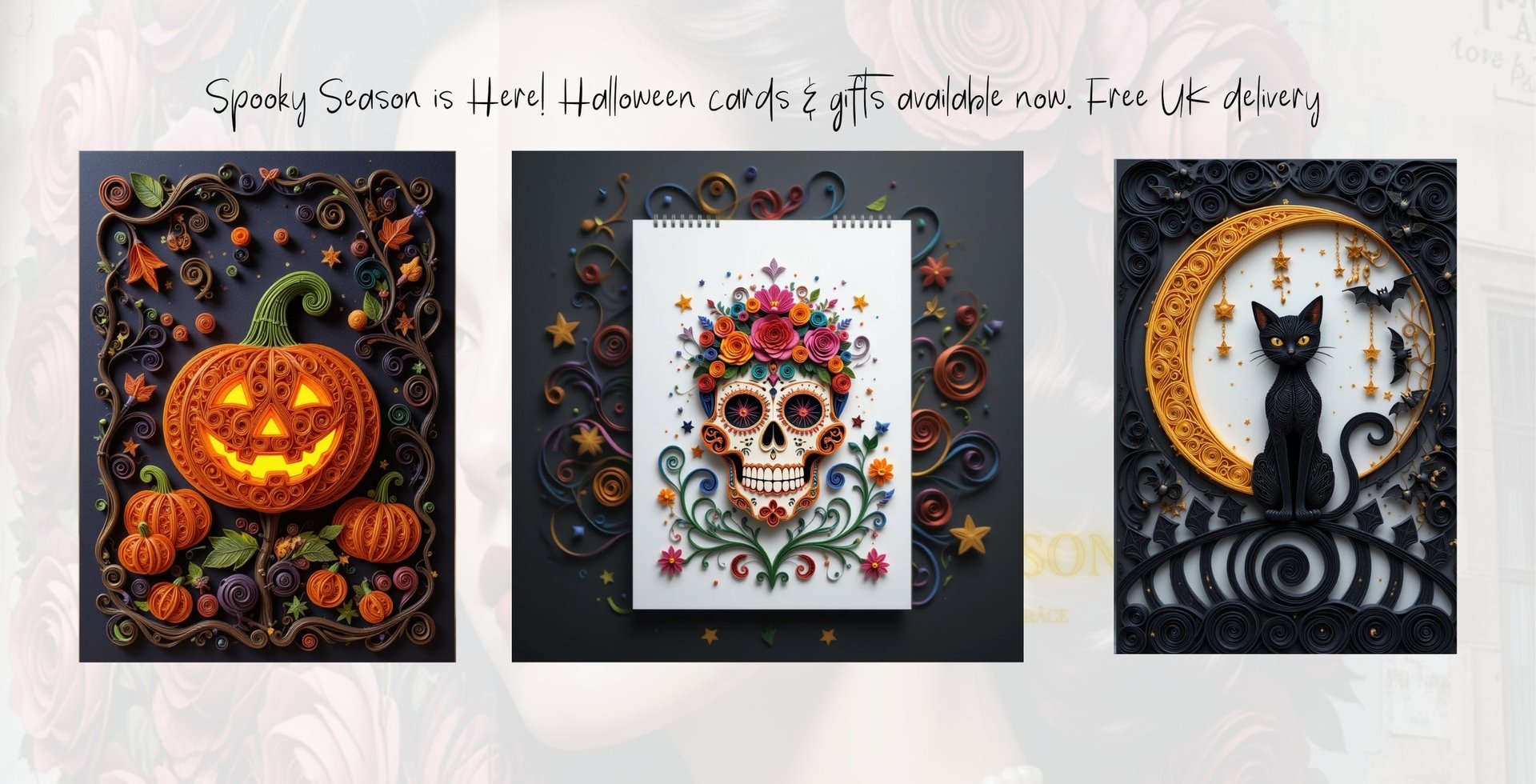
Maison à la Grâce — Custom Creations to Celebrate Life’s Moments
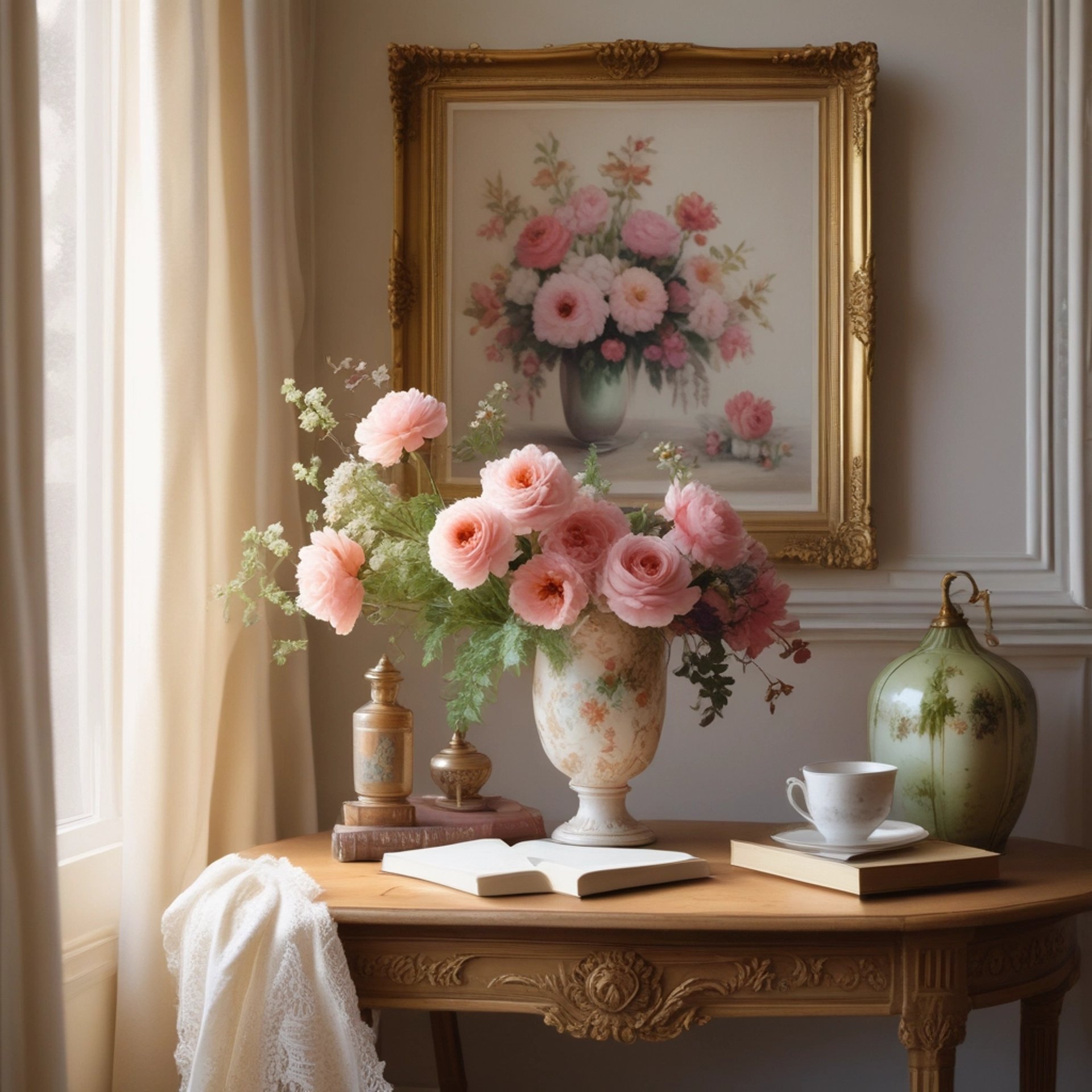
A Century of Women’s Fashion: 1920s to 2020s
From the sparkle of 1920s flapper dresses to the bold power suits of the 1980s and the effortless elegance of today in 2020s— women’s fashion has transformed dramatically over the last century. Explore each decade’s defining styles and browse Maison à la Grâce curated picks to bring timeless fashion into your home and wardrobe.
8/23/202511 min read
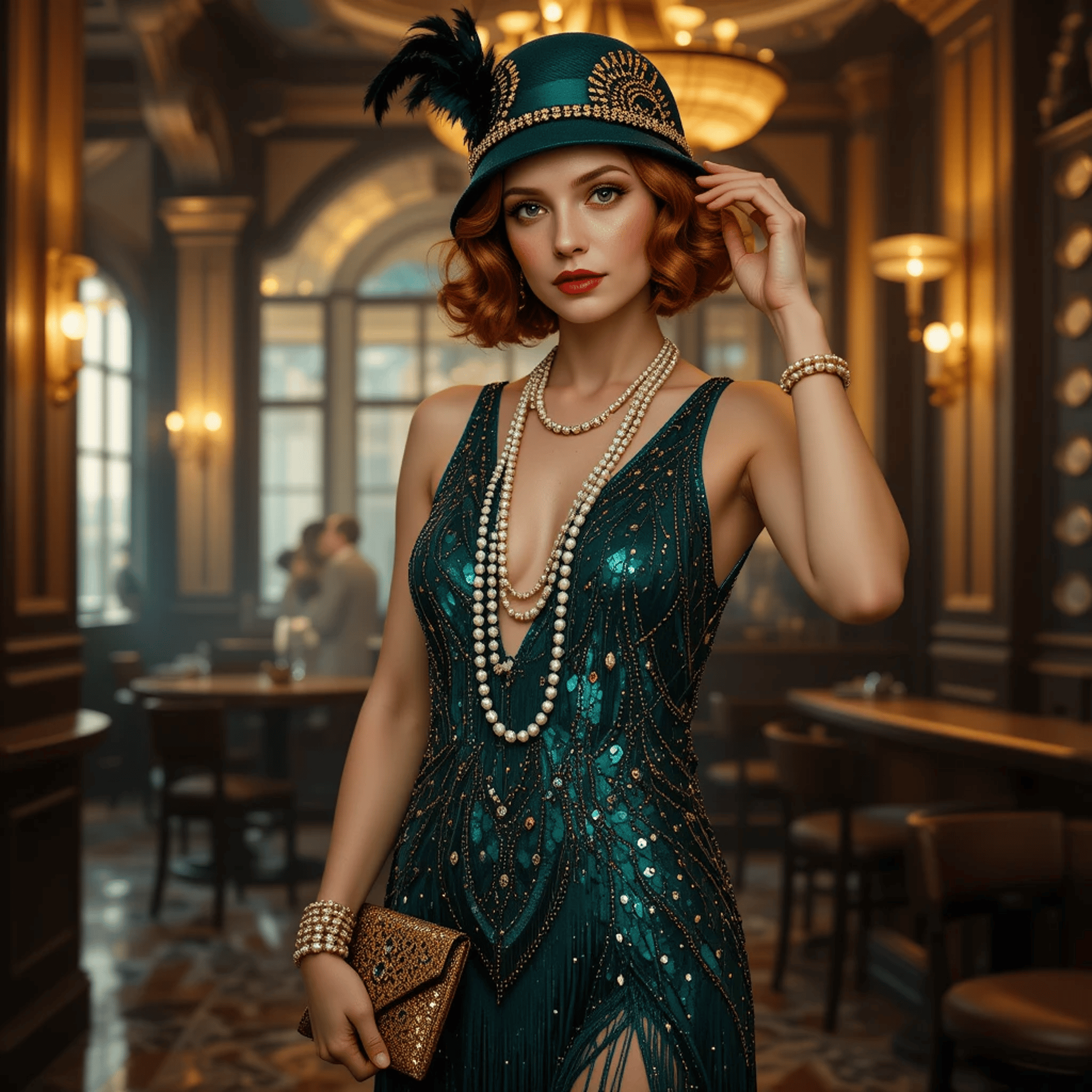
The Allure of the Roaring 1920s
When Women Cut Their Hair, Raised Their Hemlines, and Took Their Freedom
There is something irresistibly magnetic about the 1920s. Perhaps it was the sound of jazz drifting through midnight clubs, or the sparkle of sequins catching the glow of chandelier lights. But above all, it was the decade when women stepped into a new kind of freedom — and declared it through fashion, beauty, and the way they carried themselves.
A Sharp New Silhouette
Gone were the corsets and the rigid gowns of earlier years. In their place came dresses with dropped waists, fluid lines, and daring hemlines that revealed the ankle, even the calf. Fabric danced with sequins and beads, moving as playfully as the women who wore them. Pearls were not just adornments, but statements — layered long and swinging with every step of the Charleston.
The Bob: A Cut of Defiance
Perhaps nothing shocked society more than the scissors. Women abandoned their long tresses for bobs, sleek shingle cuts, or soft finger waves. The transformation was more than aesthetic — it was symbolic. Each cropped curl carried with it a declaration: I am modern. I am independent.
A Face for the Night
Cosmetics, once reserved for the stage, spilled into everyday life. Kohl-rimmed eyes, flushed cheeks, and the signature cupid’s bow lips became part of the flapper’s identity. The look was bold, expressive, and unapologetically glamorous. Even freckles — once concealed — found their place in the glow of dance halls and cocktail lounges, kissed by powder and lamplight.
A Spirit That Could Not Be Contained
Yet the essence of the 1920s was never just about appearance. It was about movement — social, cultural, and deeply personal. Women had the vote, many had jobs, and most importantly, they had permission, at last, to be seen. The flapper was not merely a fashion figure; she was a symbol of liberation, rewriting the script of womanhood for the modern age.
The legacy of the twenties lingers still. A beaded dress glimmers today, and it feels like an echo of that era. A swipe of red lipstick, and suddenly there is jazz in the air. The women of the Roaring Twenties did not just follow fashion — they embodied courage, freedom, and a playful defiance that still inspires us a century later.

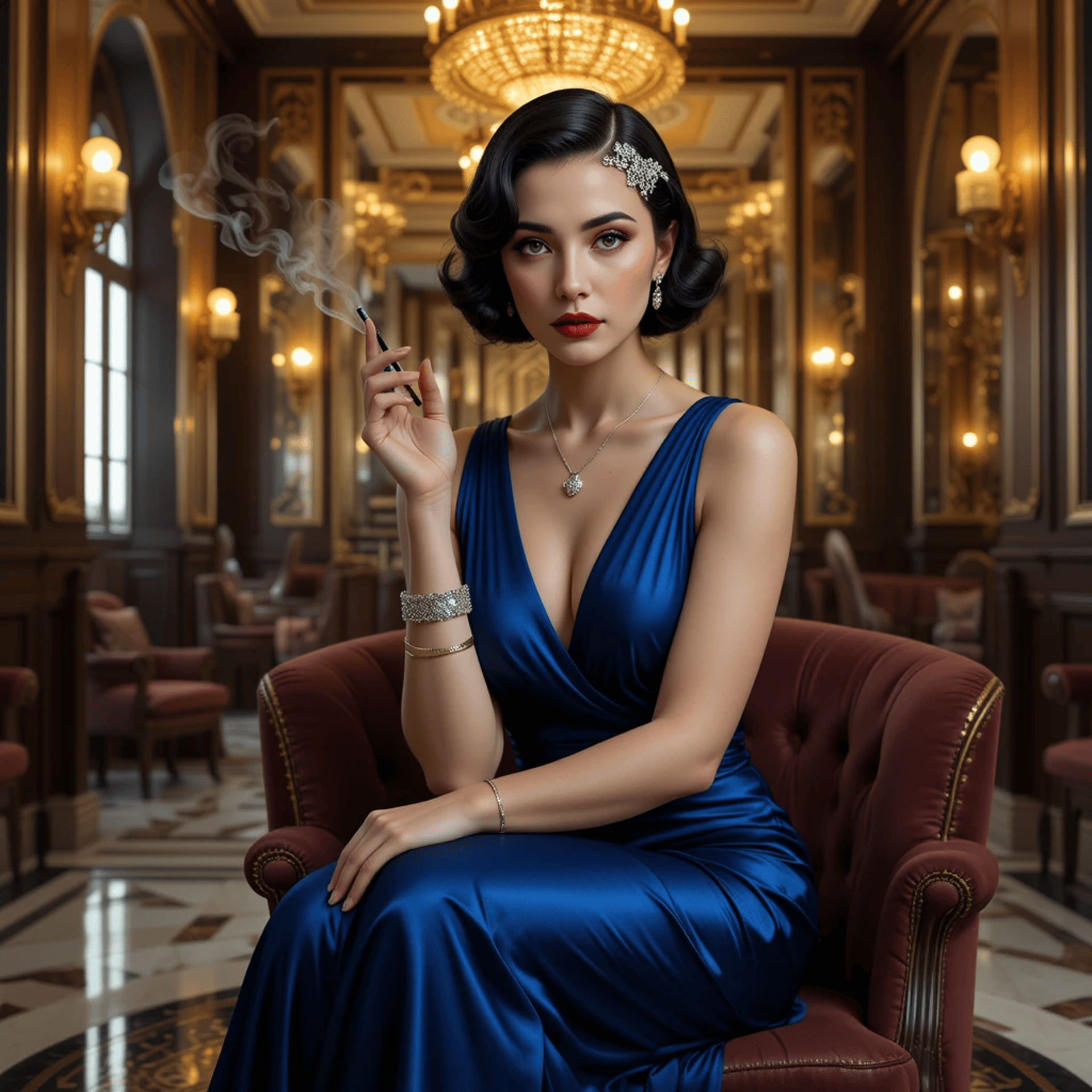
The Quiet Strength of the 1930s
When Fashion Met Resilience in an Age of Uncertainty
The 1930s did not roar. They endured. After the extravagance of the Jazz Age, the new decade moved with restraint, shaped by economic hardship but lifted by resilience. Beauty survived — not through excess, but through careful refinement and poise.
A Defined Silhouette
Corsets never returned, but the waistline did. Dresses embraced the figure again with belts and seams that created a soft hourglass. Skirts lengthened, shoulders sharpened, and fabric was cut to flatter without waste. Small floral prints, muted hues, and practical cottons reflected both modesty and necessity.
Everyday Elegance
The woman of the 1930s was more often seen in a collared day dress at a railway bench than in a glittering ballroom. Clothing had to be sturdy, shoes reliable, handbags functional. Yet the look was never without charm — a neat wave in the hair, a slim belt, a touch of lipstick. Elegance became quieter, but no less present.
Nights of Escape
Hardship did not erase glamour entirely. Cinema offered women a glimpse of satin gowns, velvet wraps, and screen idols who glided across the silver screen with ease. Bias-cut dresses, fluid and body-skimming, brought luxury to life for an evening, when sequins caught the light and worries briefly disappeared.
A Legacy of Grace
The 1930s left behind a vision of endurance and understated beauty. Clothes were chosen with purpose, crafted to last, yet always carried dignity. Women of this decade proved that true style does not depend on abundance — it thrives on resilience, composure, and the quiet confidence of grace.
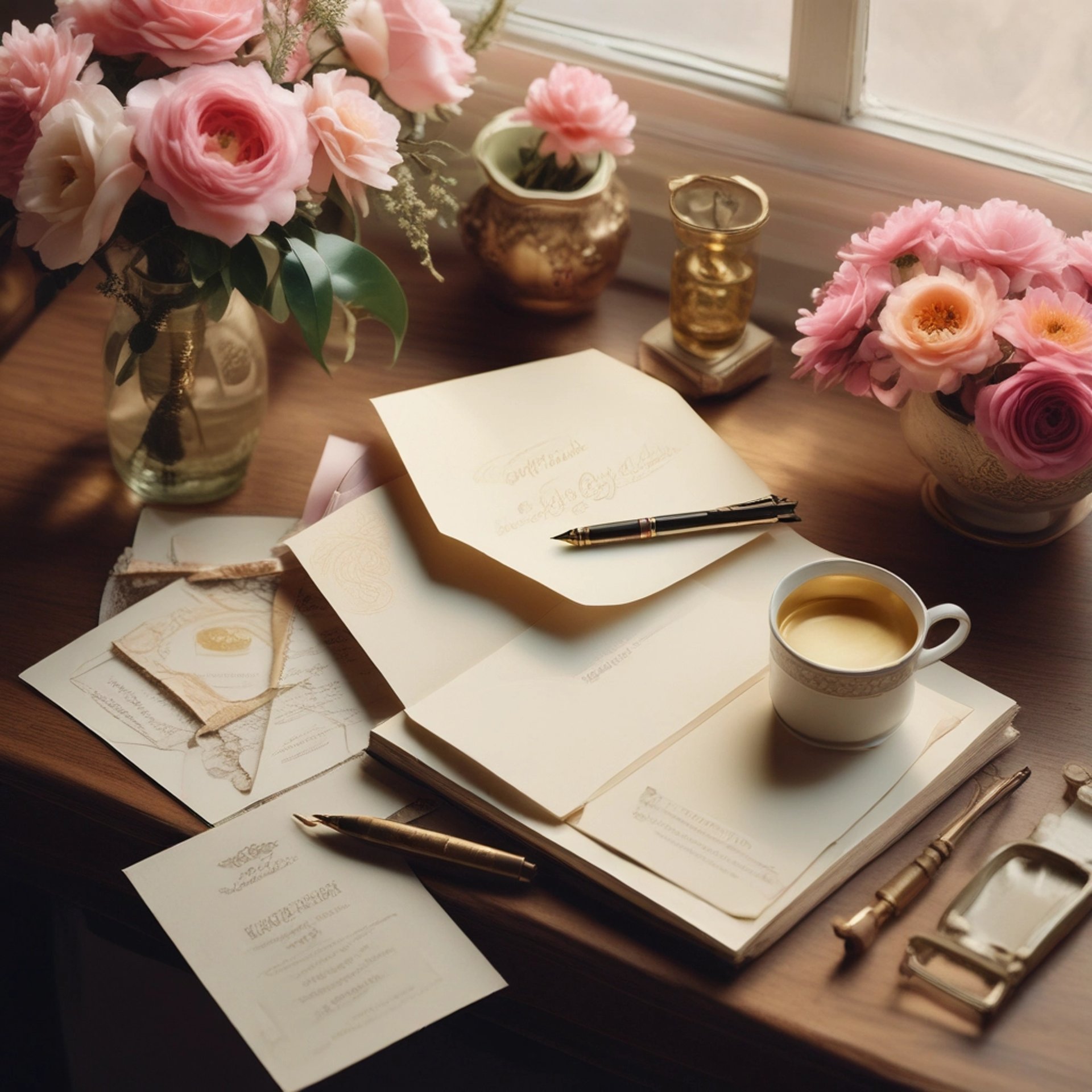
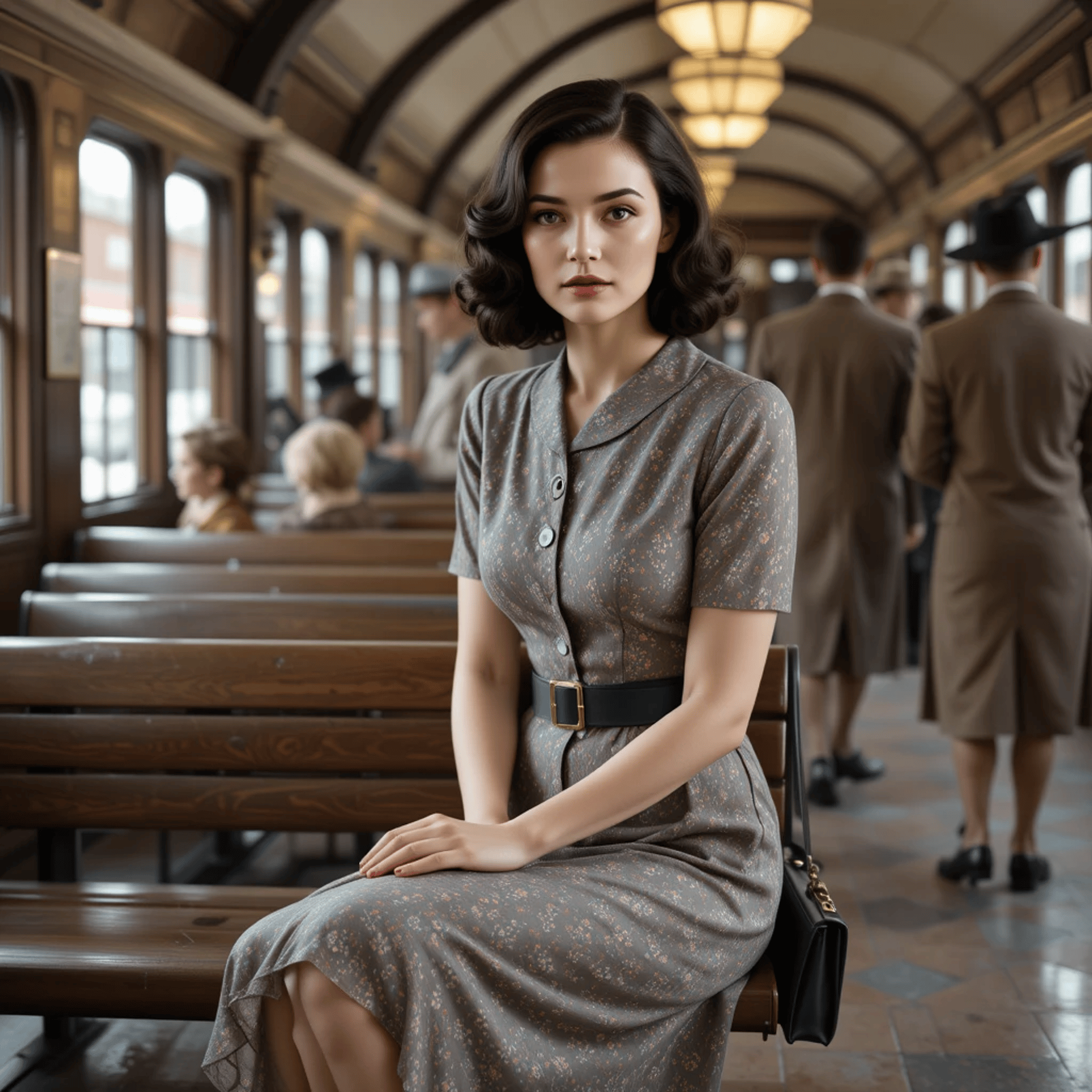
A Decade Shaped by Necessity
The 1940s were defined by both resilience and reinvention. With the world at war for the first half of the decade, fashion adapted not just to taste but to necessity. Fabrics were rationed, silhouettes simplified, and glamour often had to wait until evening. Yet, in true elegance, women found ways to remain graceful and dignified even in the most challenging circumstances.
Practical Daywear
Daywear was functional yet stylish: sharp-shouldered jackets, knee-length skirts, and sensible shoes that allowed women to step into factories, offices, and volunteer roles. Hair was styled in rolls and waves, often pinned neatly under scarves to keep it tidy while working. Make-up was minimal but purposeful — red lipstick became a symbol of morale, a statement that beauty and confidence could not be dimmed by war.
Evening Elegance
Evenings, however, still held magic. When the lights dimmed and ration books were set aside, women slipped into gowns made from repurposed fabrics, cinched at the waist to highlight the feminine form. Sequins and embellishments were rare luxuries, but creativity thrived; a well-placed brooch, silk gloves, or a single strand of pearls could transform the simplest dress into a vision of elegance.
Strength and Grace Combined
The 1940s woman embodied balance: strength in the daytime, grace in the evening. She was practical yet poised, industrious yet romantic — a reflection of a world learning to survive while still longing for beauty. At Maison à la Grâce, we celebrate this duality. To step into the 1940s is to embrace both courage and refinement, where even in times of hardship, elegance was never abandoned.
Elegance in Resilience in 1940s
When strength met grace in fashion’s most defining decade
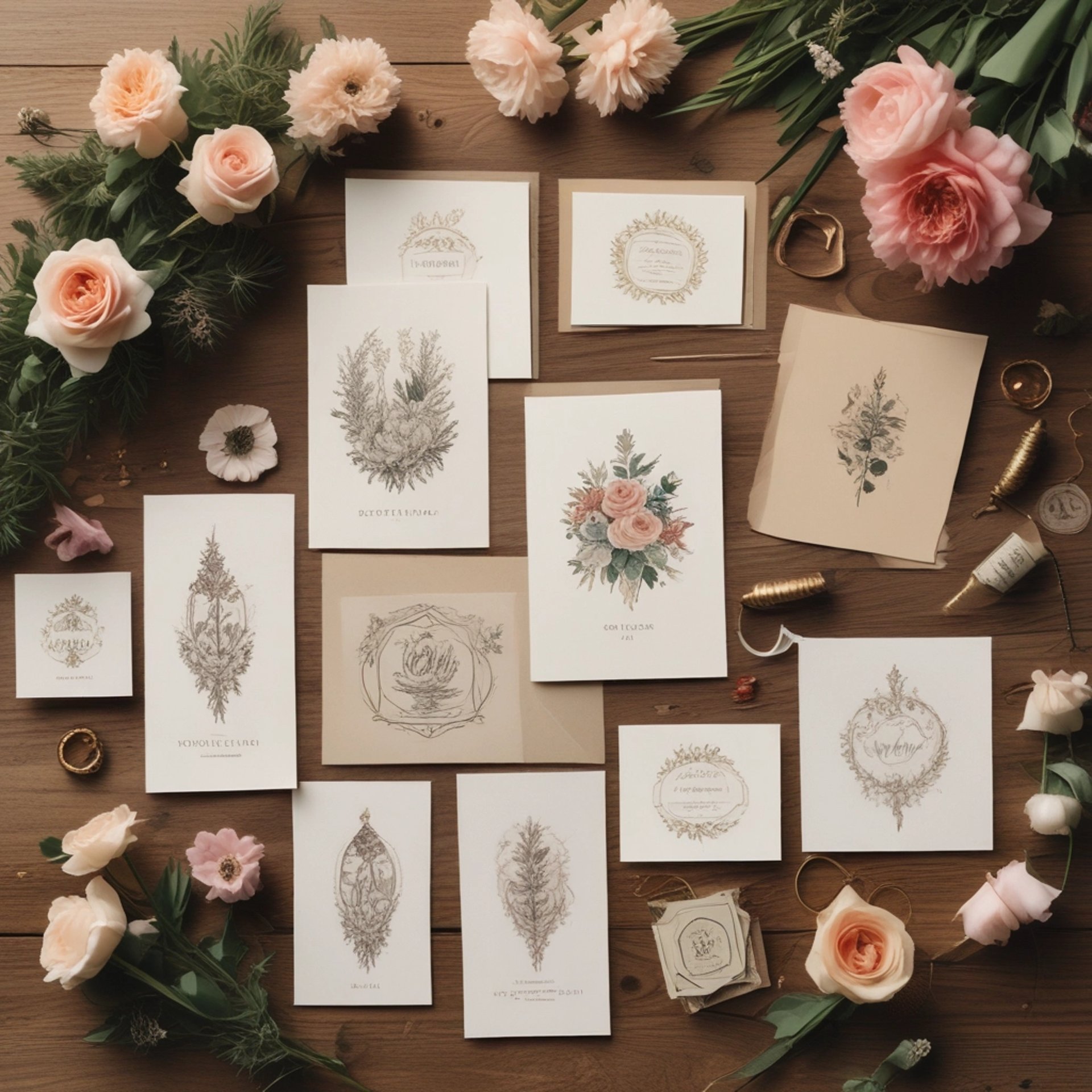
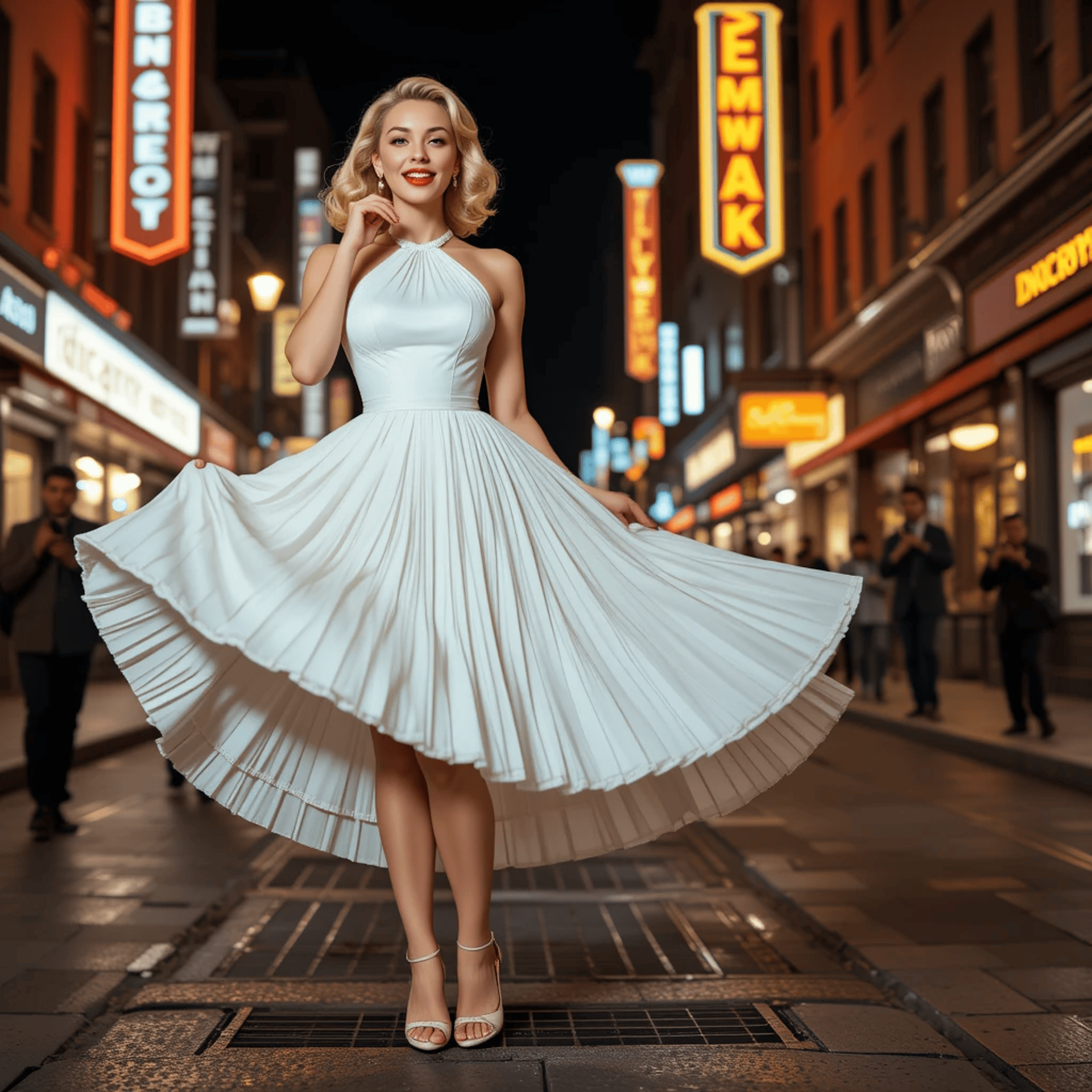
A Decade of Renewal
The 1950s marked a turning point in history — a decade of optimism and prosperity after the hardships of war. Society embraced tradition and structure once more, with women’s fashion reflecting this new era of confidence and charm. It was a time when femininity was celebrated, and grace became a cultural ideal.
Hollywood’s Influence
Film stars set the tone for beauty and fashion. Grace Kelly, Marilyn Monroe, and Audrey Hepburn became timeless icons, inspiring women across the globe to emulate their elegance. Hairstyles were softly curled, makeup perfected with winged eyeliner and red lips, and wardrobes carefully chosen to blend glamour with everyday wear.
The Shape of Style
Fashion highlighted the feminine silhouette. Cinched waists, full skirts, and tea-length dresses became staples, often adorned with polka dots, bows, or delicate embroidery. Accessories such as pearls, gloves, and kitten heels added refinement, while fabrics in pastel shades or floral prints brought a cheerful sense of optimism to daily life.
Everyday Glamour
Life in the 1950s was infused with touches of sophistication. From Sunday church outfits to evenings spent dancing in local halls, women carried themselves with poise. Even a casual trip to a café or a stroll through town had a sense of ceremony, as elegance and presentation were considered part of self-respect.
The 1950s combined charm, optimism, and a Hollywood-inspired aura that shaped the decade’s unique identity. It was a world where glamour stepped beyond the red carpet and into everyday life — ensuring women felt elegant no matter the occasion.
Elegance Meets Everyday Glamour 1950s
A Decade of Renewal
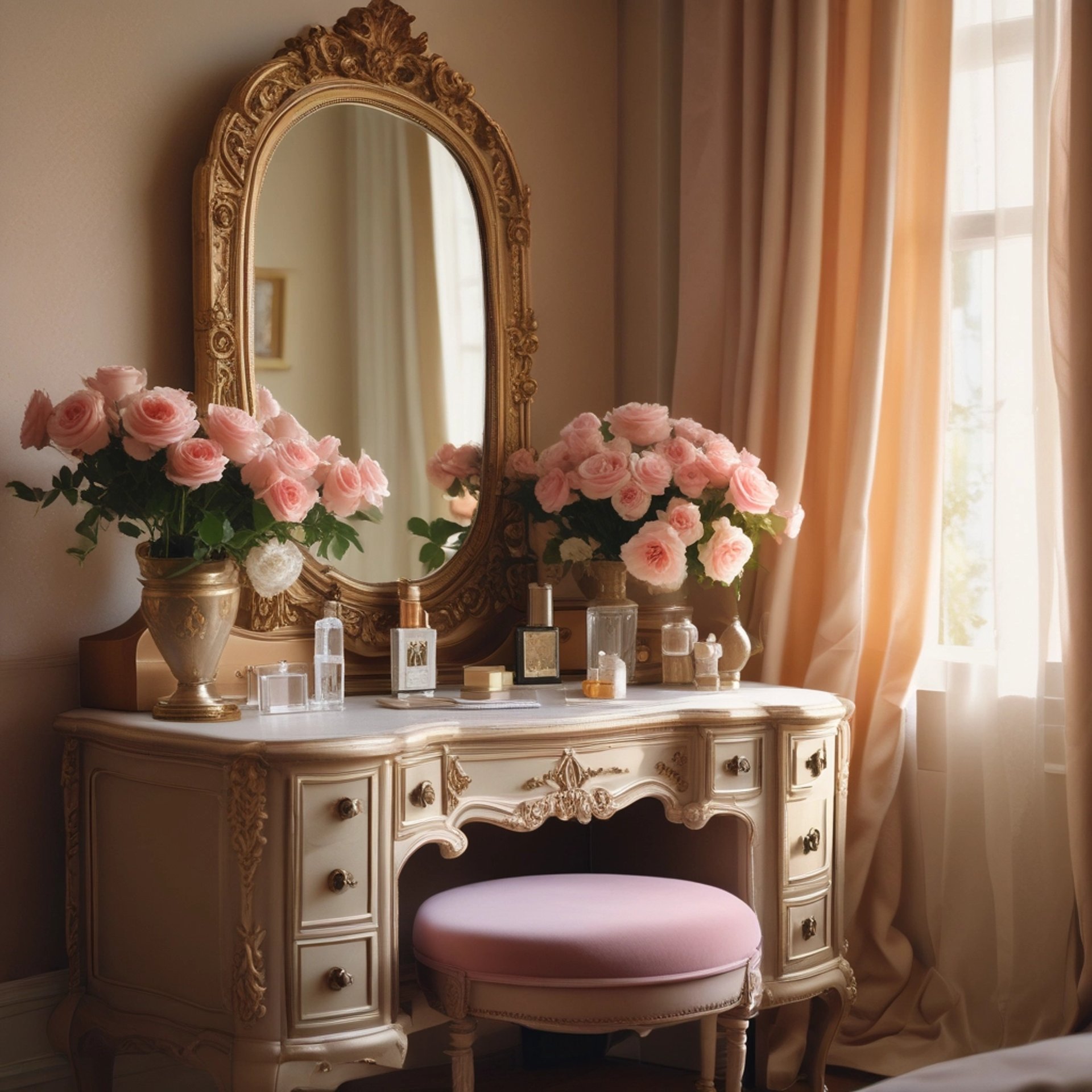
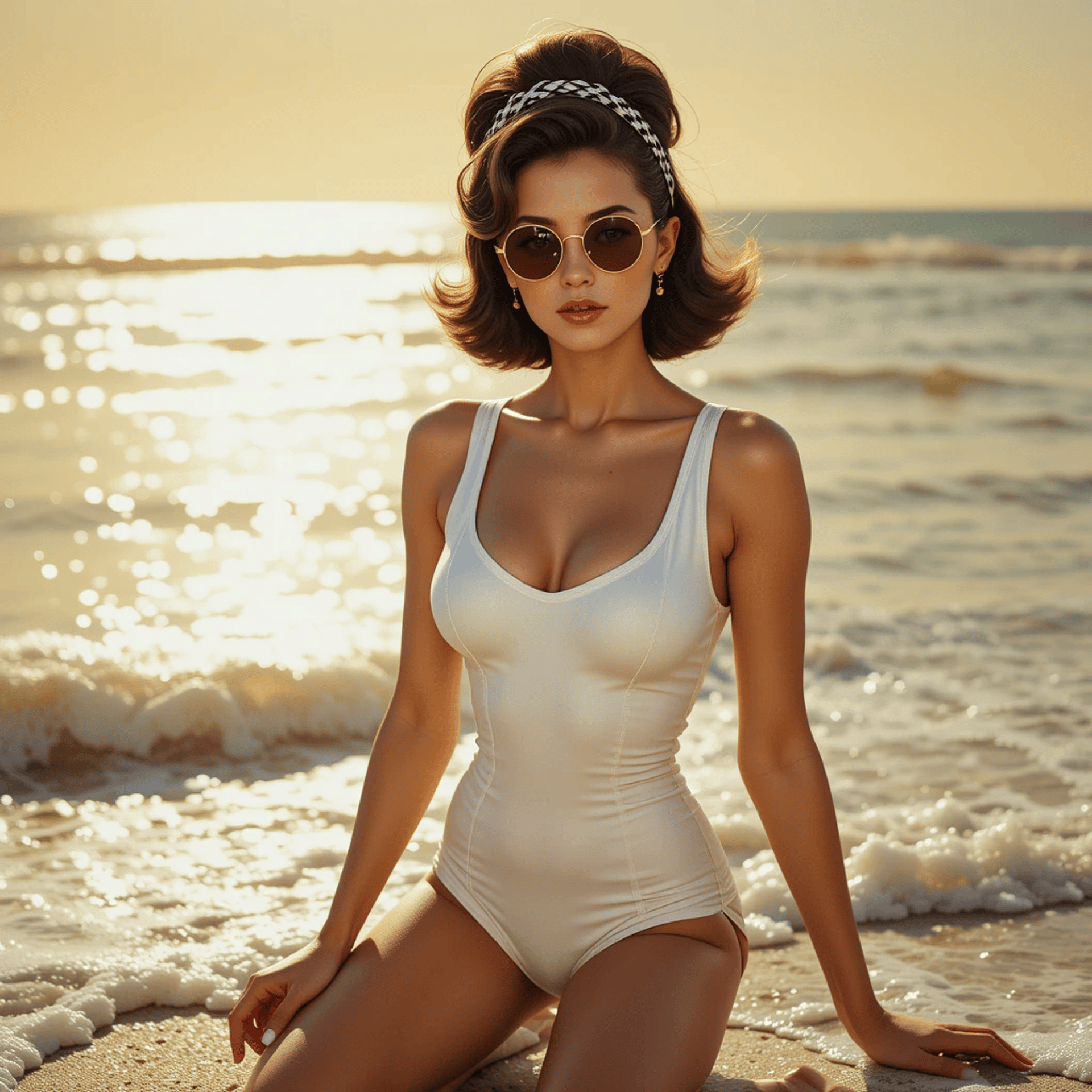
The Age of Change
The 1960s were unlike any decade before. This was the era of youth taking the lead, rewriting the rules of culture, politics, and fashion. After the restraint of the 1950s, the world suddenly burst into colour — from psychedelic art to revolutionary music. It was the decade of The Beatles, Woodstock, civil rights marches, and the moon landing. Every corner of life seemed to vibrate with energy, experimentation, and a desire to break free from tradition.
Fashion Steps Into the Spotlight
Women’s style in the ’60s went in two bold directions: sleek sophistication and free-spirited rebellion. The bouffant hairstyle, teased high and held with a headband, became iconic, while short hemlines and the invention of the miniskirt changed wardrobes forever. Audrey Hepburn gave us timeless chic, while Twiggy introduced a playful, wide-eyed look that felt brand new. On the other side stood the hippie movement — loose, flowing dresses, natural hair, beads, and sandals, showing that freedom could also mean simplicity.
A Cultural Revolution
More than just clothes, the 1960s defined identity. It was the first time teenagers had real cultural power, shaping markets, music, and trends. Music festivals became symbols of unity, and protests turned fashion into statements. Sunglasses, patterned tights, geometric prints, and bold eyeliner made women feel unstoppable, and individuality finally had room to shine.
The Lasting Spirit of the ’60s
Looking back, the 1960s were about courage — courage to try new things, challenge authority, and live loudly. The decade left us unforgettable icons and styles that still inspire designers today. Whether it was a girl in round sunglasses standing at a beach or a woman in London twirling in her minidress, the ’60s proved that fashion was no longer just about looking pretty — it was about making a statement.
The 1960s marked freedom, experimentation, and the rise of youth culture. From bouffants and miniskirts to hippie dresses and sunglasses, the decade captured rebellion and joy in equal measure. It was a time when fashion didn’t just follow trends — it became the voice of a generation.
Freedom, Rebellion, and Style That Broke the Rules 1960s
A Decade of Youth, Rebellion, and Style That Changed Everything
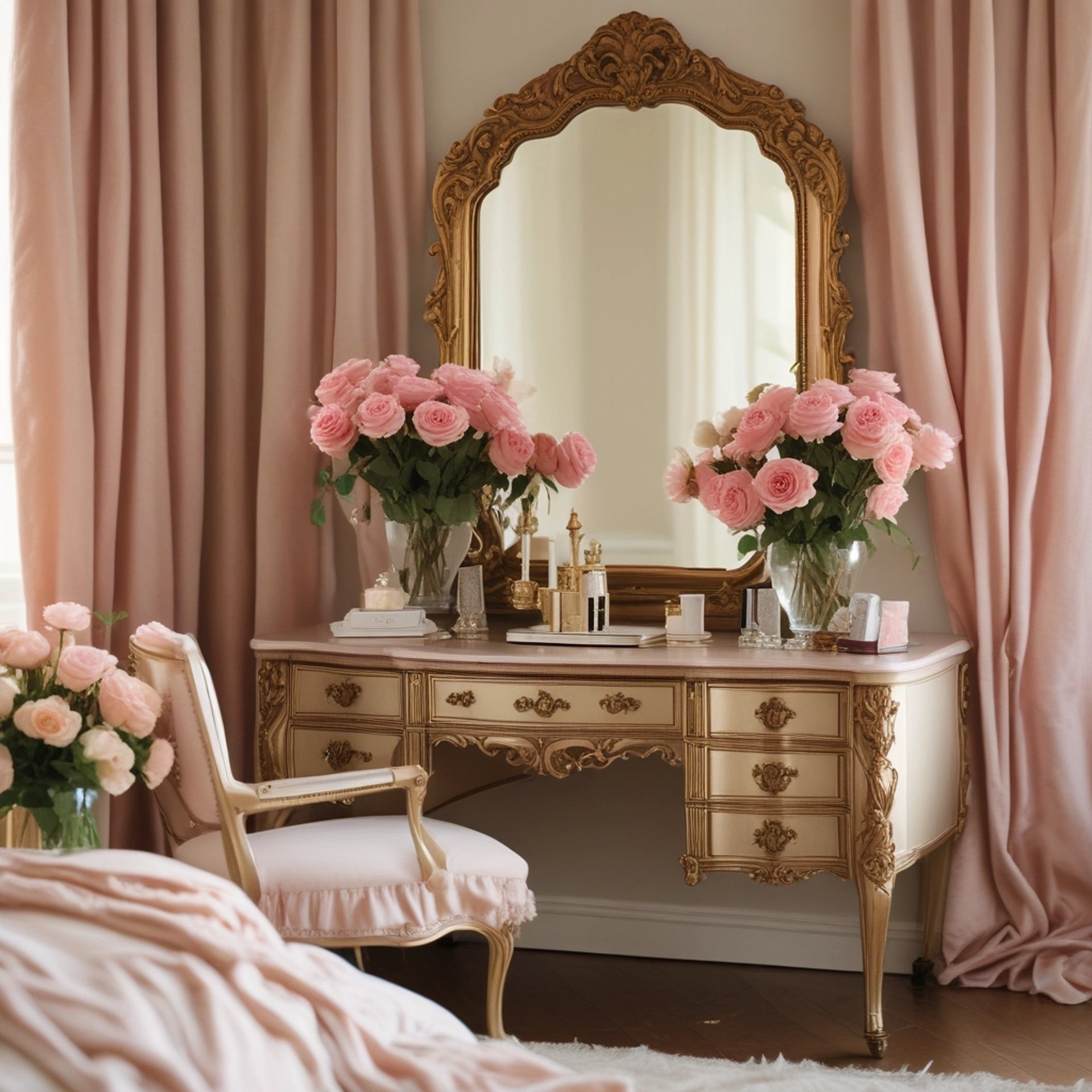
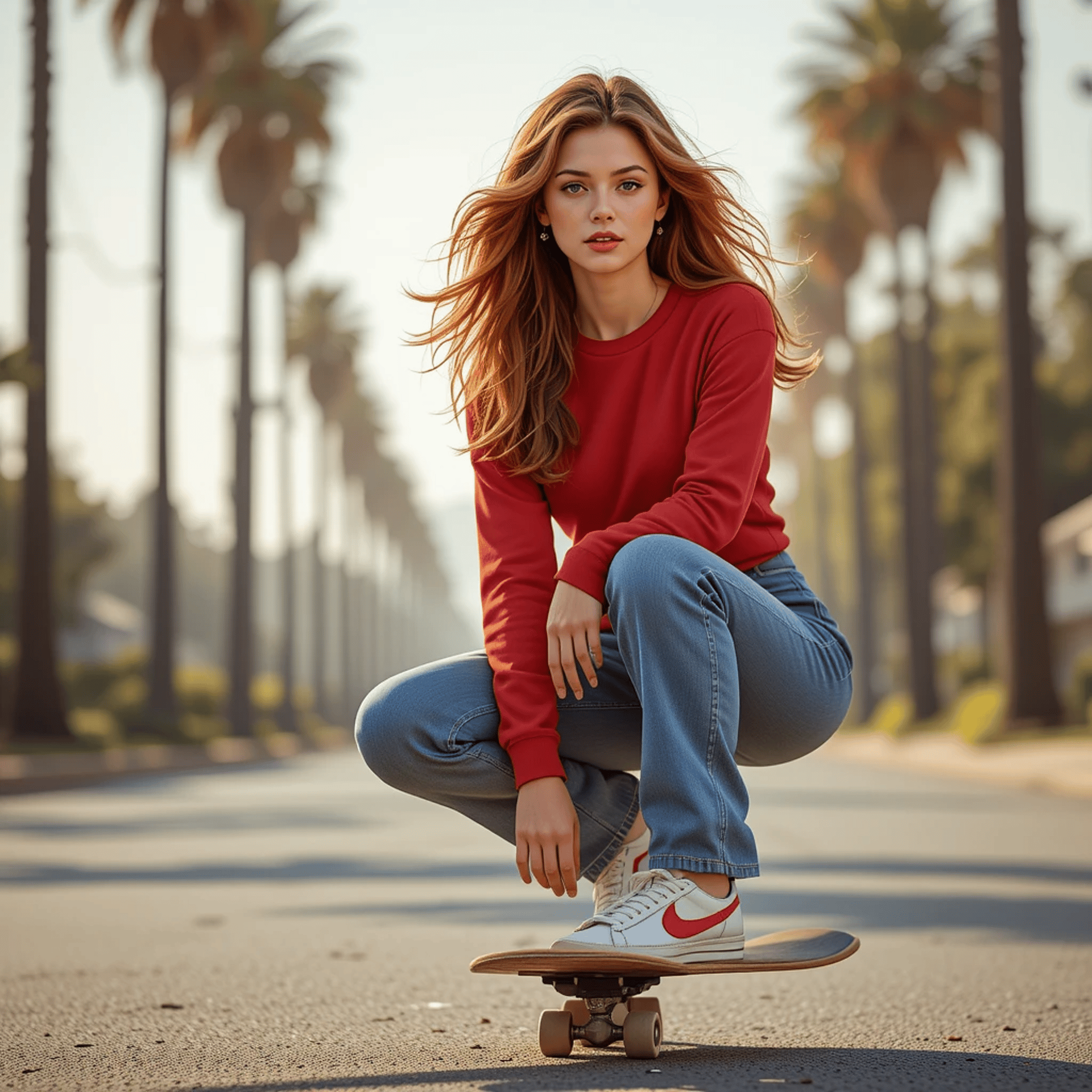
A Decade in Motion
The 1970s exploded with energy. From the streets to the dance floors, movement defined the decade. It was the age of roller skates, skateboards, and disco balls spinning endlessly. People embraced freedom not just as a concept but as a lifestyle — rushing outdoors, finding joy in music, dance, and sport.
The Style Revolution
Fashion was daring yet relaxed. Wide-legged jeans, flared trousers, and sporty sneakers became everyday staples. Women wore casual knits and bold colours, often paired with oversized sunglasses. Hair was just as iconic: long, feathered, and voluminous, framing faces with an easy confidence.
The Culture of Cool
Music, cinema, and television shaped daily life. From disco divas to rock legends, the era encouraged individuality. TV icons and movie stars inspired people to live boldly, whether that meant hitting the dance floor in sequins or skating down the boulevard in denim.
A Generation Unstoppable
The 1970s weren’t polished or overly glamorous — they were raw, real, and vibrant. This decade taught us that freedom could be fashionable, and that style had as much to do with attitude as with clothes.
The 1970s gave us style in motion — a blend of confidence, fun, and freedom. It remains one of the most iconic decades, still influencing today’s fashion and culture.
The Era of Freedom, Flair, and Bold Statements in 1970s
From Disco Lights to Skateboards — A Decade That Defined Self-Expression
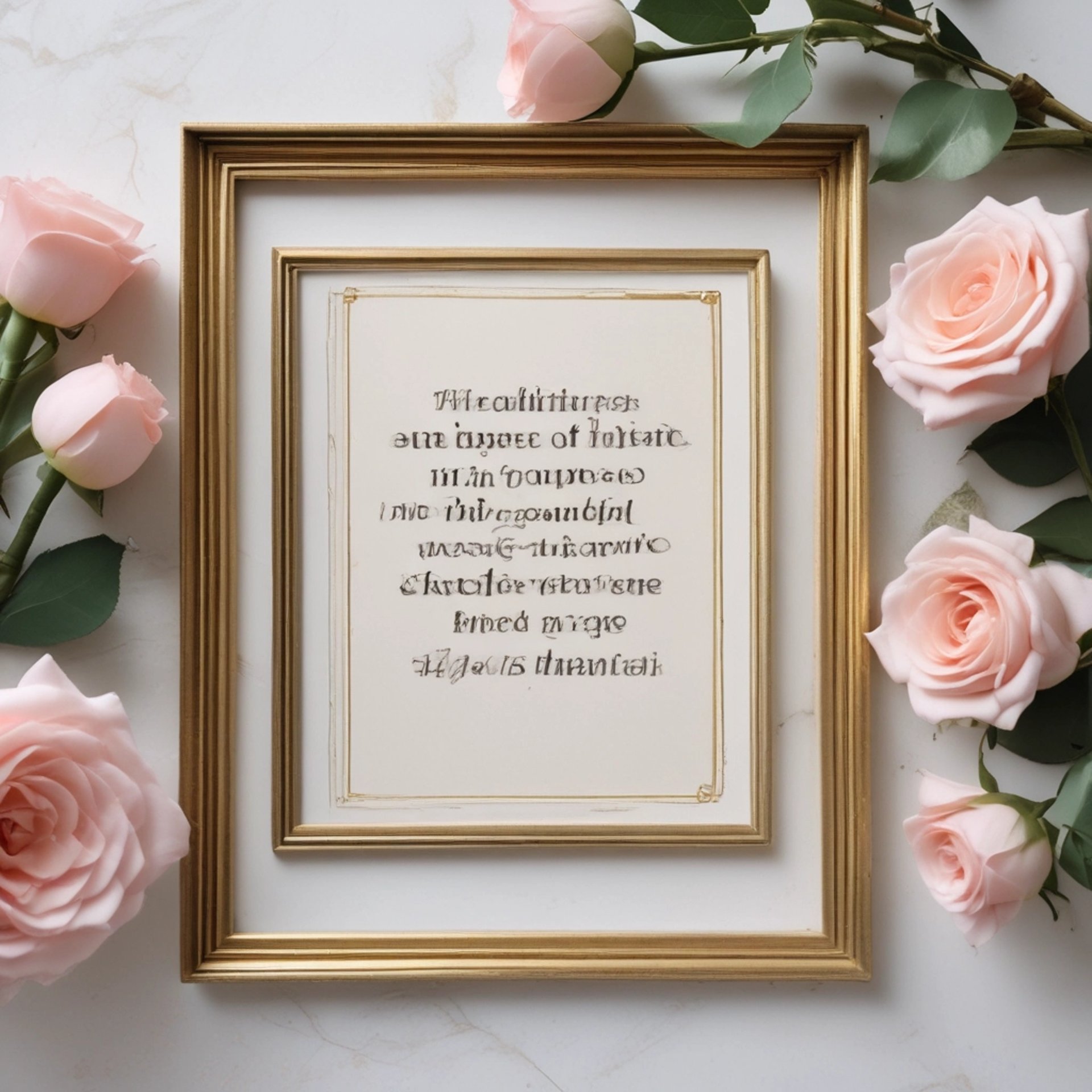
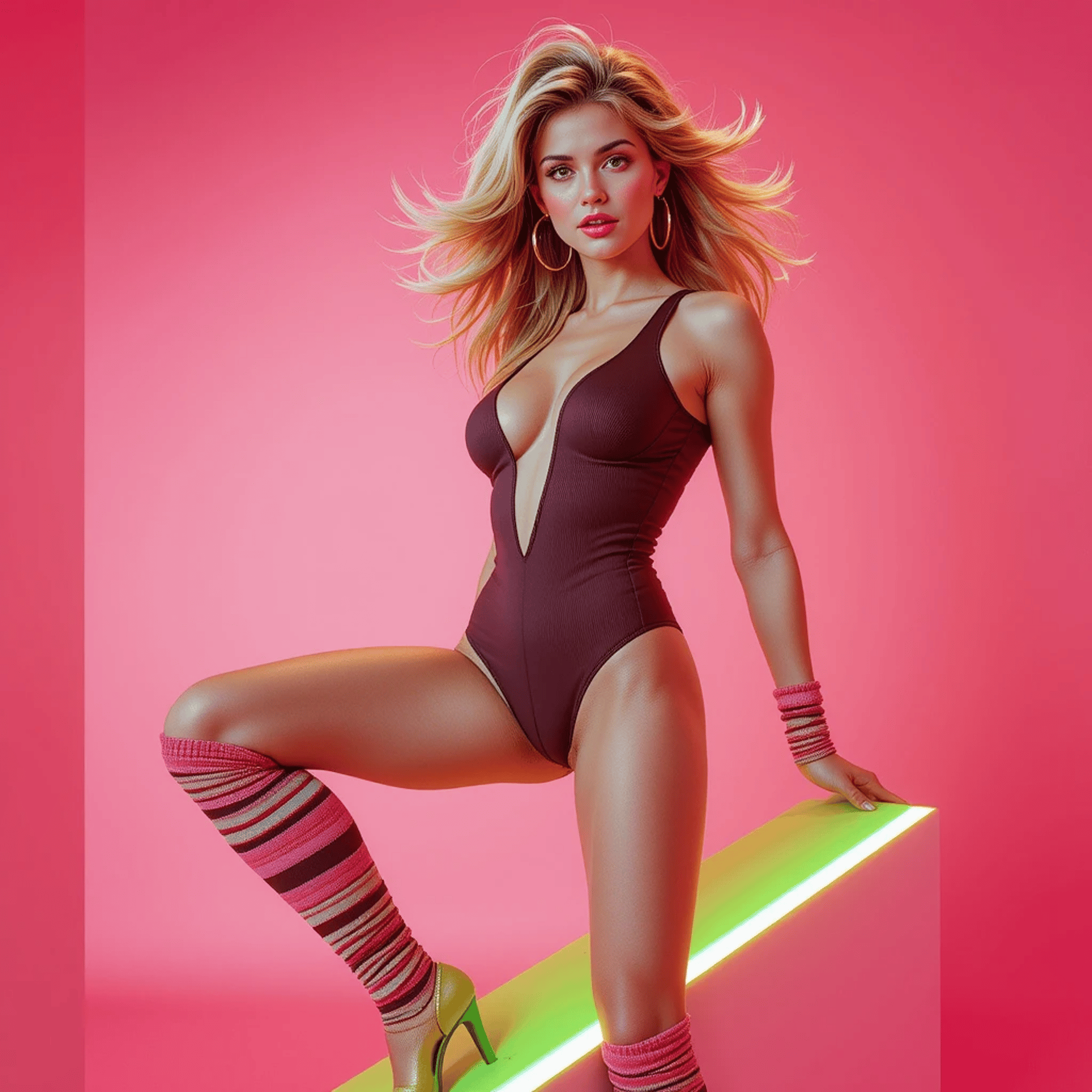
The Fitness Revolution
The 1980s burst onto the scene with a new obsession: aerobics. Jane Fonda workouts, televised fitness classes, and the rise of gyms brought exercise into everyday life. Suddenly, sportswear wasn’t just for the gym — it was fashion.
The Aerobics Look
High-cut leotards, striped legwarmers, and matching headbands defined the era. Women embraced figure-hugging bodysuits in vibrant colors, often layered with tights and bold accessories. Feathered hair, glossy lips, and radiant blush completed the powerful, energetic look.
Neon and Confidence
The decade loved bold colours — hot pink, electric blue, lime green — and fitness imagery captured it perfectly. Aerobics shoots were glamorous, with starlets posing mid-motion, embodying energy, freedom, and fun. Even sweat looked stylish when paired with neon backdrops and dazzling smiles.
More Than a Workout
The aerobics craze wasn’t only about fitness; it was about empowerment. Women could be athletic and glamorous at once, rewriting how beauty and strength were portrayed in culture.
The 1980s proved that fitness and fashion could dance together in bold neon harmony. It was a decade of energy, colour, and unapologetic confidence.
Neon, Fitness, and Bold Self-Expression in 1980s
When Fashion Met Fitness and Colour Took Centre Stage
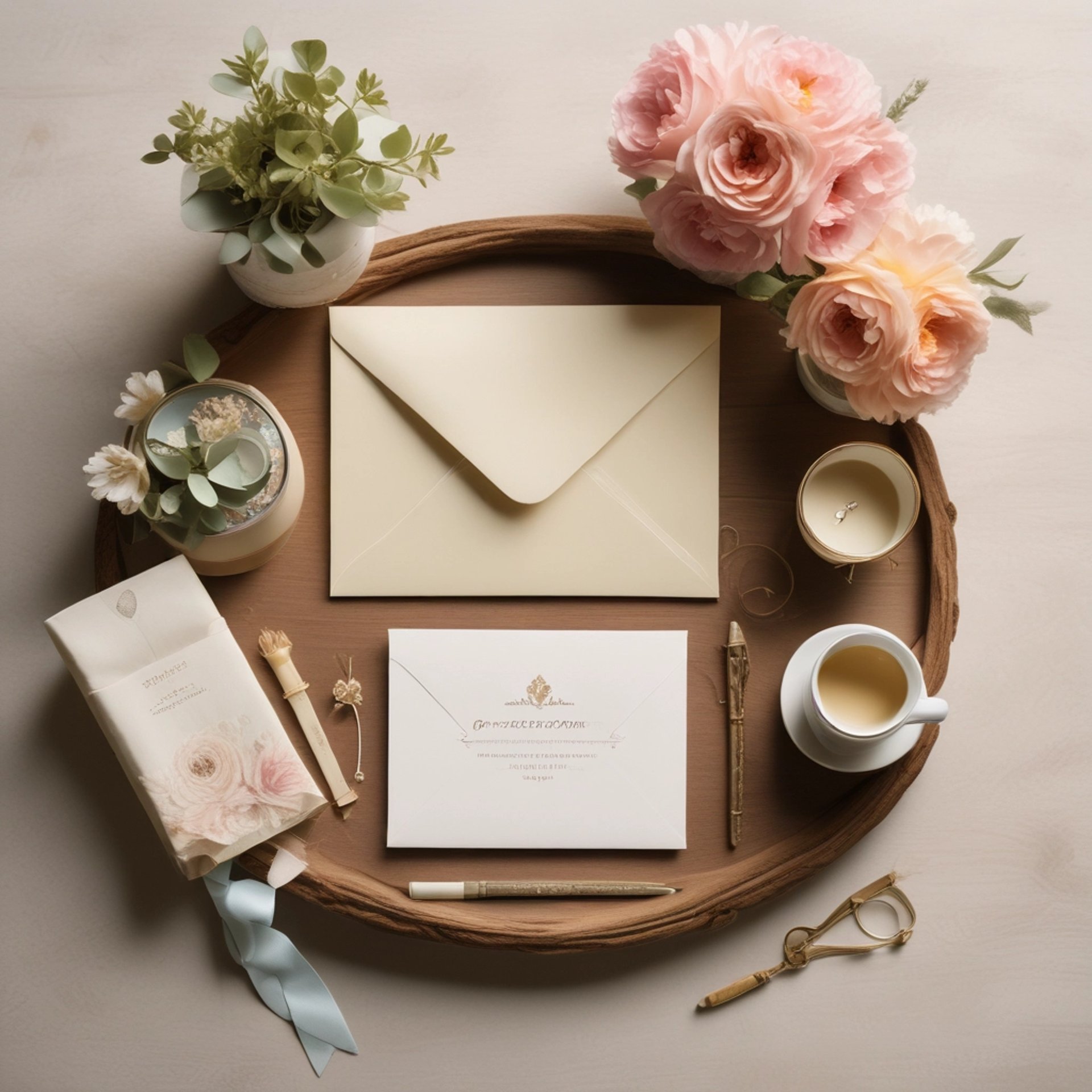

When Fashion Became Effortless and Global
The 1990s stripped fashion back to simplicity, embracing a new era of minimalism after the boldness of the ’80s. Women traded neon leggings and oversized shoulder pads for clean lines, muted tones, and effortless styling. The mood was casual yet chic, a decade defined by the rise of supermodels, streetwear, and a “less is more” philosophy that still influences wardrobes today.
Denim, Leather, and the Casual Revolution
At the heart of 1990s fashion was denim — relaxed fits, high-waisted jeans, and straight-leg cuts dominated sidewalks and runways alike. Paired with a simple white tee and a black leather jacket, this look captured the everyday cool of the decade. Leather became a wardrobe essential, adding an edge to even the most casual outfits. Accessories were minimal, and confidence did the styling.
Supermodels and the Rise of Airport Style
The decade gave rise to the "supermodel off-duty" look, a new kind of glamour rooted in casual comfort. Icons of the era were spotted in airports wearing jeans, simple tops, and oversized jackets, carrying duffle bags as effortlessly as they walked the runway. This practical yet polished style blurred the line between travel wear and fashion, setting trends that women everywhere embraced.
The Influence of Music and Streetwear
Grunge music added its own stamp with plaid shirts, chunky boots, and a laid-back vibe, while hip-hop brought oversized streetwear and bold sneakers into the mainstream. The decade was diverse in its aesthetics, but its strongest current was that fashion no longer had to be extravagant to be impactful.
The 1990s proved that elegance can live in simplicity. With denim, leather, and minimal effort, women of the era defined a timeless version of casual chic that continues to inspire fashion today.
Effortless Cool and Minimalist Edge 1990s
When fashion met supermodel chic, and casual style ruled the streets.
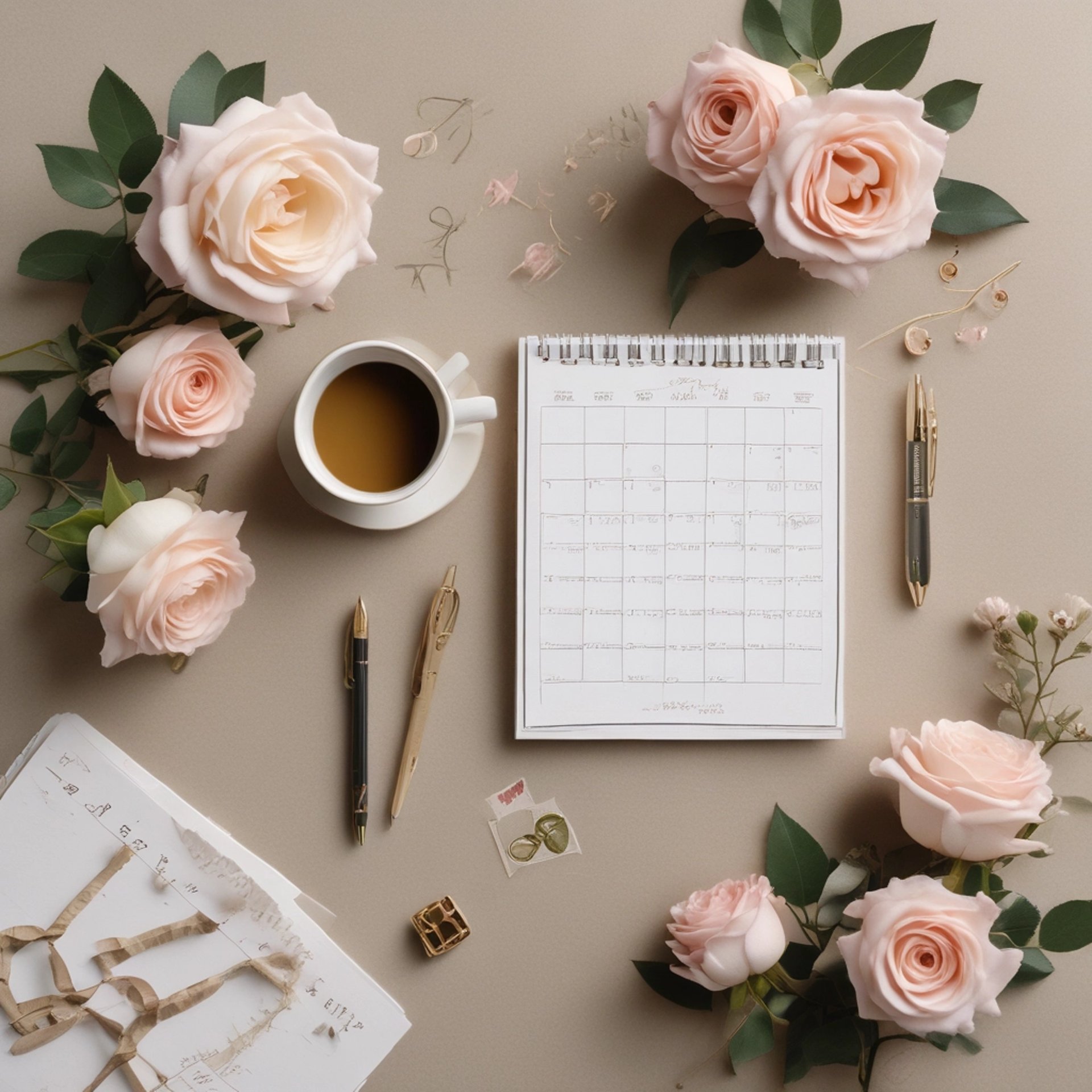
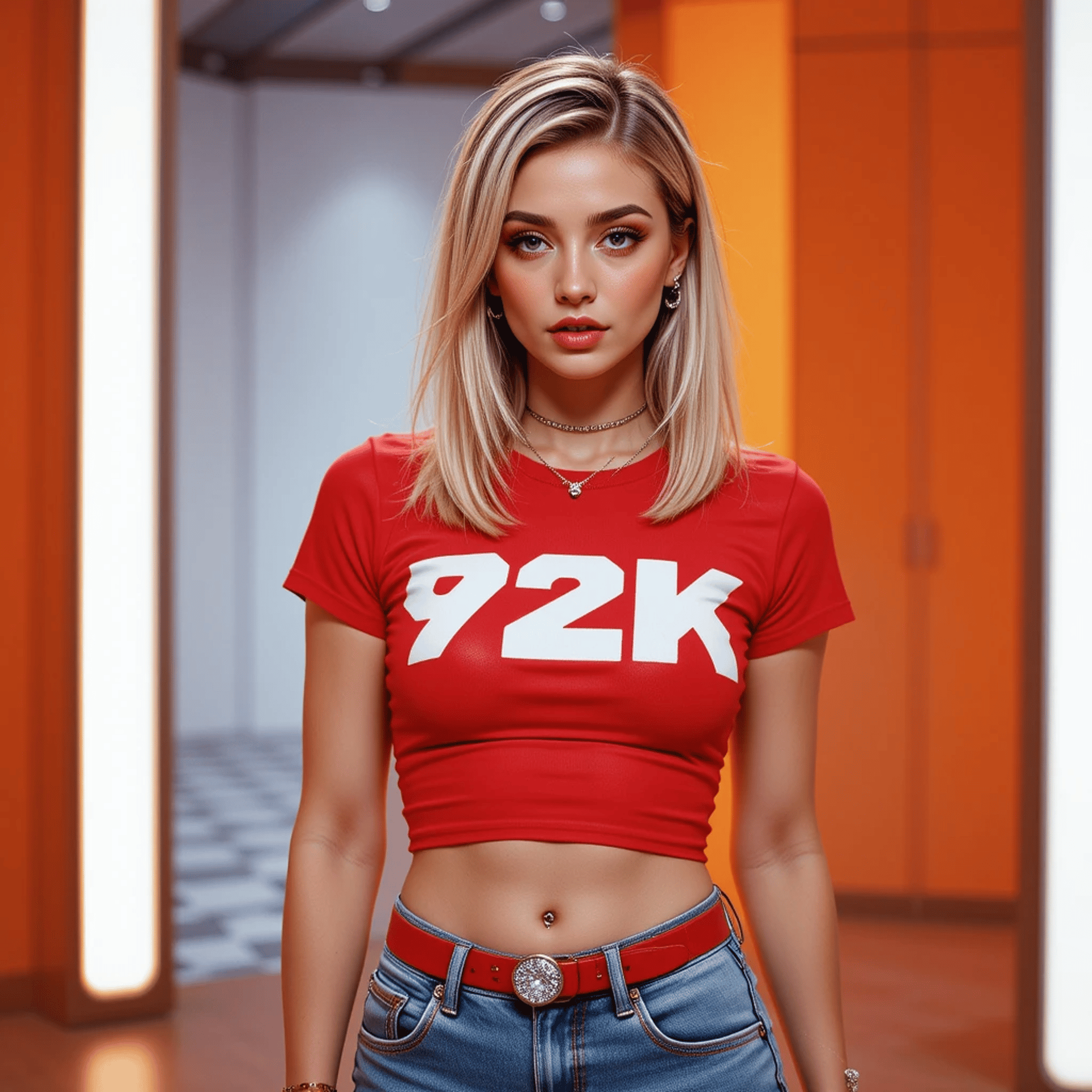
The 2000s brought fashion straight from the music stage into everyday life. Pop stars like Britney Spears, Christina Aguilera, and Destiny’s Child shaped trends that millions of young women copied. Fashion became more playful, bold, and celebrity-driven than ever before.
Crop Tops and Low-Rise Jeans
No 2000s look was complete without the infamous combination of a short crop top and ultra low-rise jeans. This daring duo celebrated body confidence and set the tone for youth culture. Embellishments like rhinestones, studded belts, and visible waistbands made casual outfits sparkle.
Pop Princess Glamour
There were a many ultimate style muse. Their playful outfits — from sequined stage costumes to sporty red-carpet looks — embodied the decade’s mix of glamour and everyday wearability. Glitter makeup, glossy lips, and flat-ironed hair with highlights became a universal beauty code.
Accessories of the Decade
Chokers, belly button piercings, trucker hats, and oversized sunglasses completed the early-2000s aesthetic. Logos and brand names were worn proudly, with Juicy Couture tracksuits and designer handbags being the height of luxury.
The Spirit of the 2000s
The fashion of this decade reflected a world obsessed with celebrity culture, MTV, and the idea that anyone could be a star. It was unapologetically flashy, experimental, and fun — a celebration of pop culture in clothing form.
The 2000s turned the spotlight on celebrity-driven fashion, where music, media, and style fused into a bold cultural statement that still influences Y2K-inspired trends today.
Fashion in the 2000s: Pop Icons and Y2K Boldness 2000s
The era of crop tops, low-rise jeans, and celebrity-inspired street style.

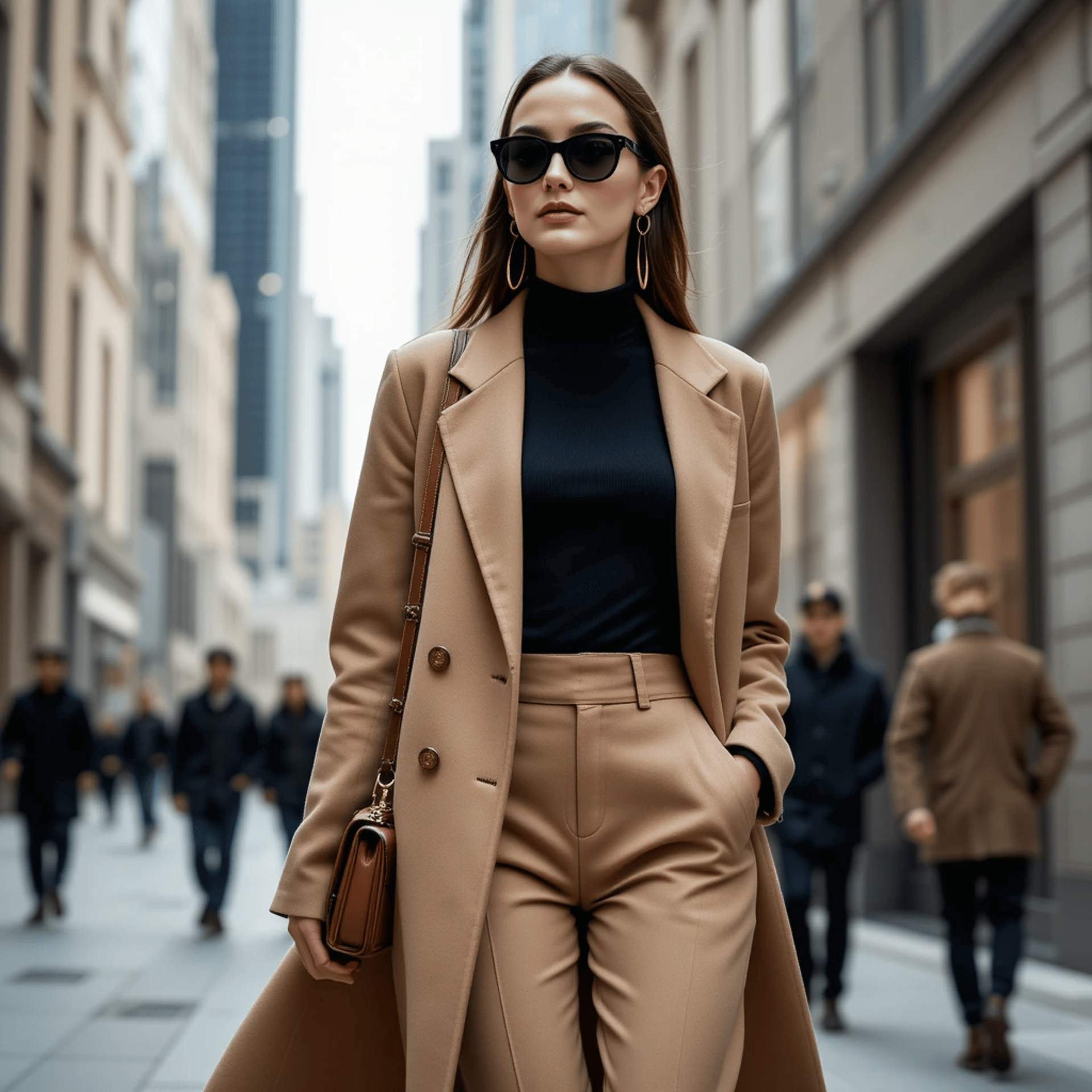
The 2010s marked a dramatic shift in fashion, as simplicity became the new luxury. Neutral tones, oversized coats, and structured silhouettes took over, bringing elegance into everyday wardrobes. It was a time when blending high fashion with streetwear became not only acceptable but iconic. The decade balanced polish with practicality, reflecting a world that was moving faster than ever.
Minimalist Chic
Sharp tailoring, camel coats, and monochrome palettes defined the minimalist look of the 2010s. Instead of loud colours, the focus turned to clean lines, high-quality fabrics, and versatile outfits that could move seamlessly from day to night.
Streetwear Revolution
The casual became powerful in this era. Sneakers were paired with suits, hoodies with tailored trousers, and oversized sunglasses became the ultimate statement. Comfort no longer meant compromising on style—it was elevated into the mainstream.
Digital Influence
With the explosion of social media, fashion was suddenly more accessible and democratic. Street style photography, lifestyle bloggers, and online influencers began shaping global trends, making the 2010s the first fully digital fashion decade.
Effortless Confidence
The essence of the 2010s was understated confidence. Fashion wasn’t about excess—it was about self-expression through simplicity. Less became more, and timeless elegance was redefined for a modern world.
The 2010s blended minimalism with streetwear, giving rise to a cool, confident aesthetic. It was a decade where fashion met function, and personal style became global through the lens of digital culture.
Minimalism Meets Street Style in 2010s
A decade of sleek tailoring, effortless cool, and the rise of digital influence.
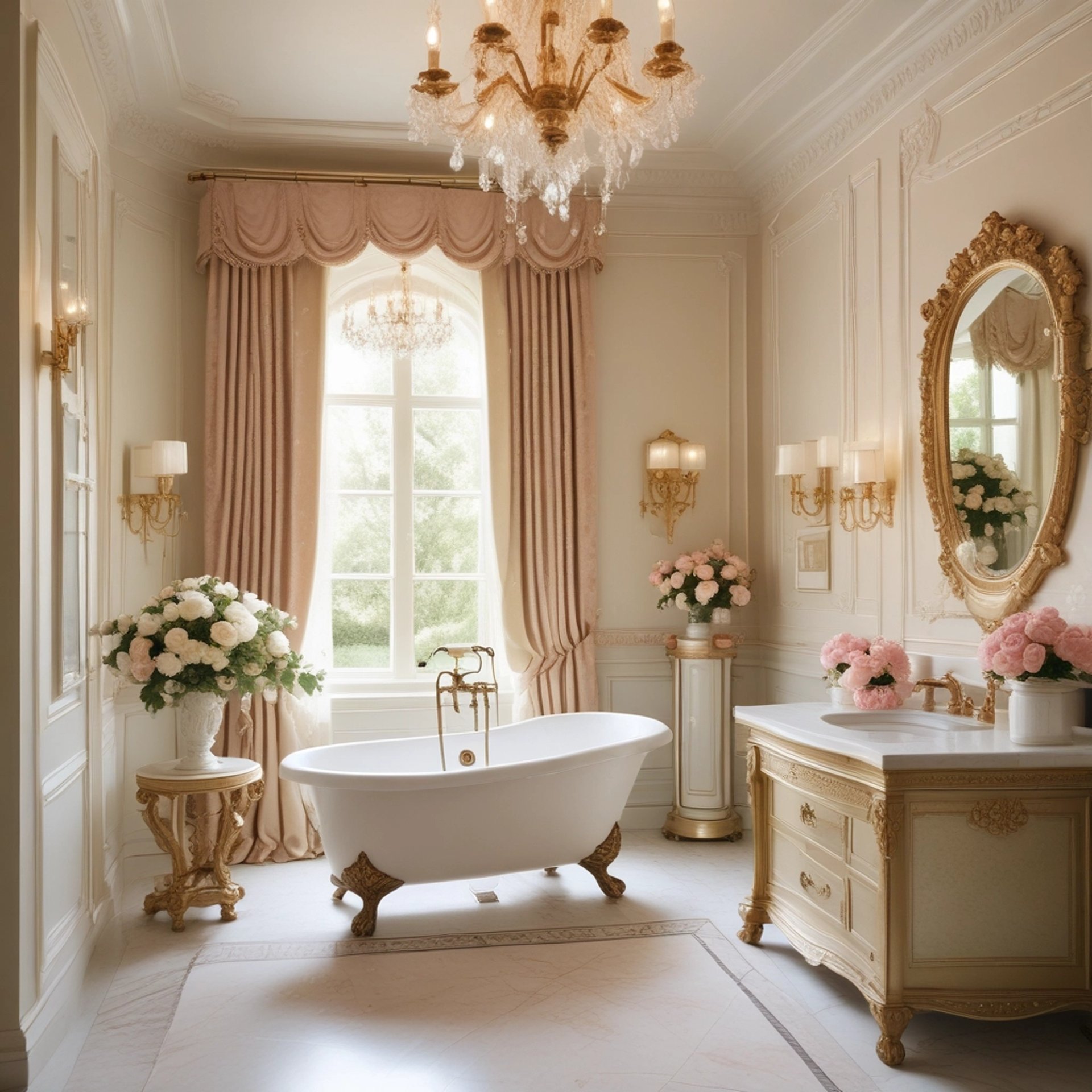
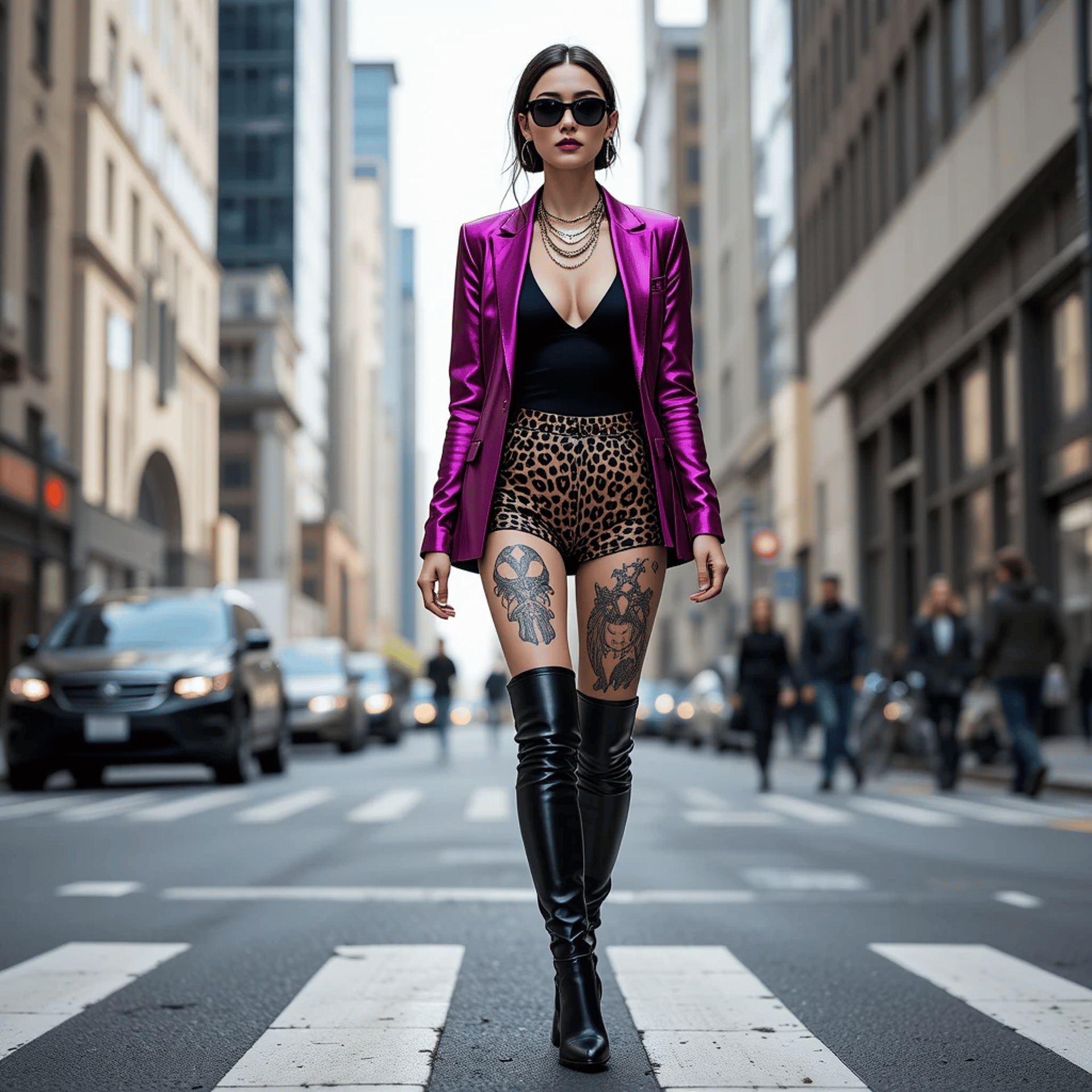
Breaking the Mold
The 2020s ushered in a new era of daring fashion, where individuality took centre stage. Instead of following strict rules, style became a canvas for self-expression. From oversized blazers paired with bold prints to metallics and neon accents, this decade embraced the fearless mixing of textures, patterns, and eras.
Streetwear Meets Glamour
What makes the 2020s unique is the seamless blend of streetwear and luxury. Chunky sneakers could be worn with a sequined dress, while tailored blazers were styled with biker shorts or oversized boots. Everyday fashion blurred the line between casual and couture, giving rise to a powerful, eclectic aesthetic.
Statement Accessories and Tattoos
Accessories grew bolder than ever before — oversized sunglasses, chunky jewelery, and boots with attitude became the staples of the modern wardrobe. Body art also became part of mainstream style, with tattoos seen as fashion statements just as much as clothing, telling personal stories while complementing daring outfits.
The Confident Individual
The 2020s are about owning one’s uniqueness. Fashion in this era is less about fitting in and more about standing out with confidence. Whether through a striking blazer in electric hues, animal print details, or body art, this decade reflects empowerment, freedom, and unapologetic authenticity.
The 2020s celebrate individuality, confidence, and edge. It’s an era where fashion isn’t just worn — it’s declared boldly, like a personal manifesto.
The Bold Spirit of the 2020s
Fashion in the Age of Confidence, Edge, and Self-Expression
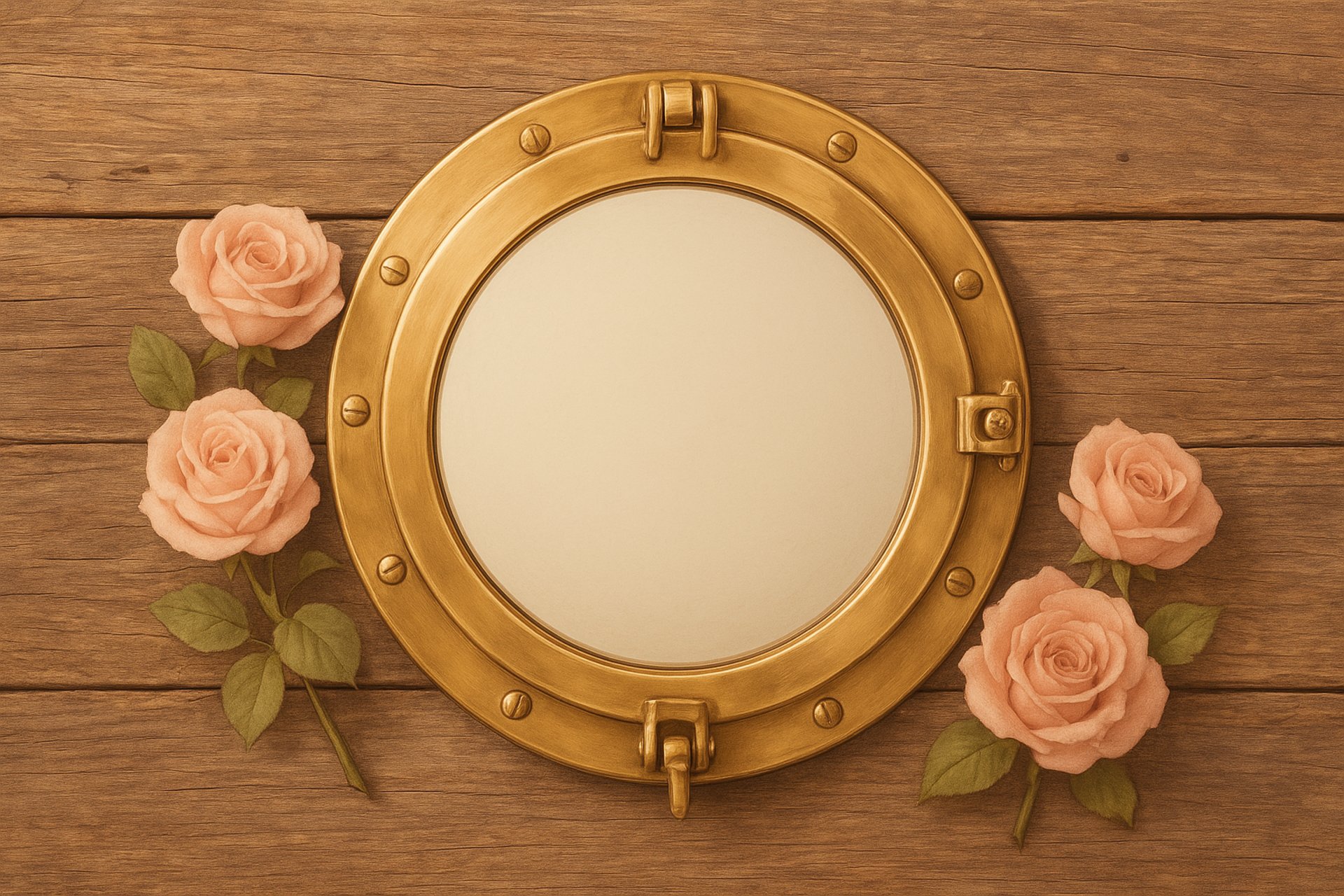
Maison à la Grâce
info@maisonalagrace.com
© Maison à la Grâce 2025. All rights reserved.